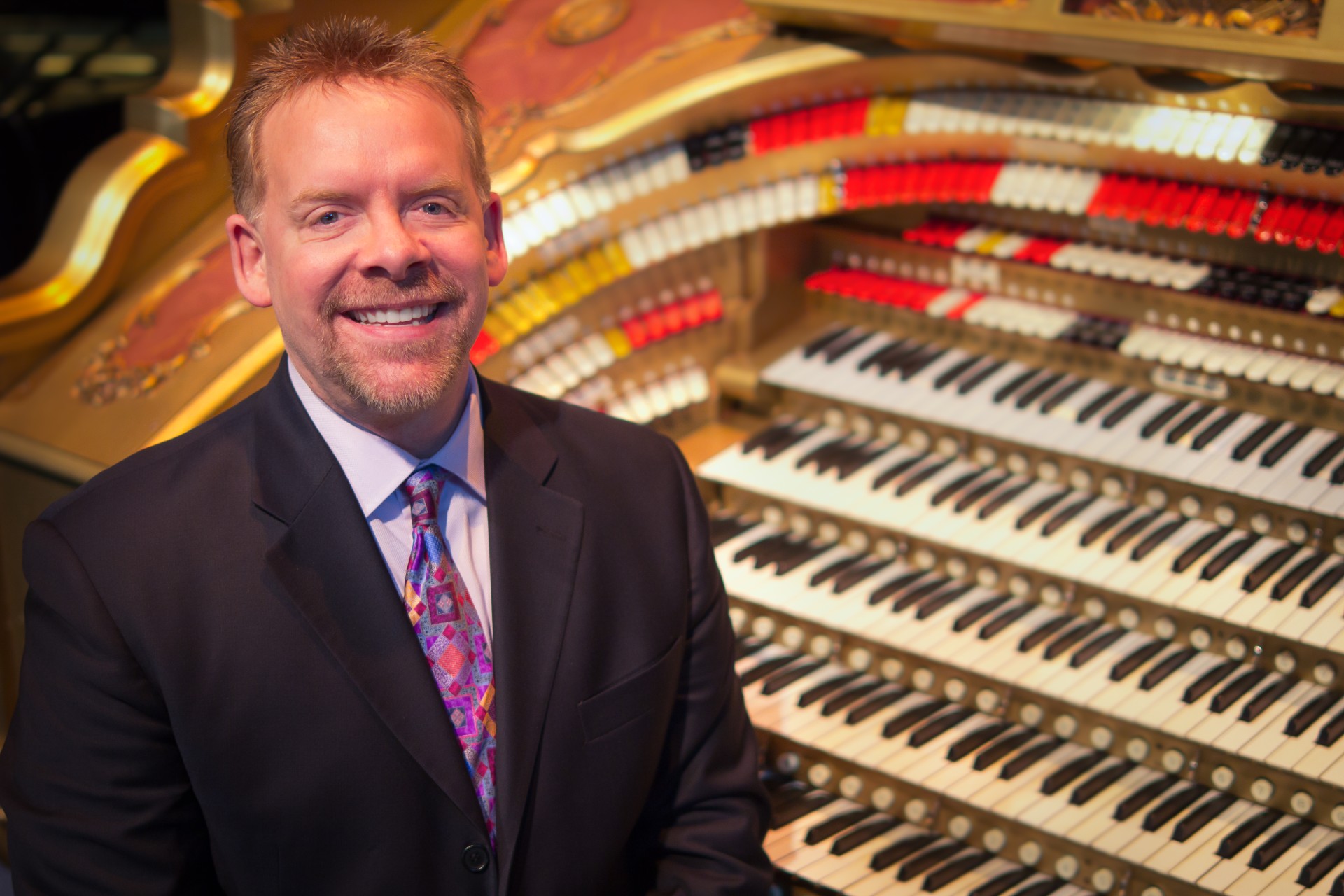
Christian Elliott is one of today’s premier organists focused on the presentation of historically authentic silent film accompaniment. The protégé of legendary silent film organist Gaylord Carter, he continues the tradition of silent film accompaniment as passed down to him from one of the finest practitioners of film accompaniment from the silent film era. His dedication ensures that this nearly lost art continues to thrive, offering audiences an authentic glimpse into the cinematic experiences of the past.
Over the course of his career, Elliott has performed extensively at prestigious venues, including the Packard Foundation’s Stanford Theatre (Palo Alto, California), UCLA, the Cinequest and San Francisco Silent Film Festivals, the San Luis Obispo International Film Festival, as well as with the San Diego Symphony, Los Angeles Conservancy, and the Academy of Motion Picture Arts and Sciences. Since 2015, he has been scoring and presenting silent films for the Seattle Paramount Theatre’s popular “Silent Movie Mondays” series.
In addition to silent film accompaniment, Elliott’s contributions to the world of theatre organ music include numerous solo performances across the United States and six solo recordings that showcase his passion and skill in the art form. In recognition of his contributions to these art forms, he was named “Organist of the Year” by the American Theatre Organ Society in 2009.
A classically trained organist, he graduated with honors from Vanguard University of Southern California with degrees in Music and Business Administration, served as Organist at Menlo Park Presbyterian Church for over three decades, and studied with celebrated organist and composer Richard Purvis.
Through his commitment to historical authenticity and his passion for engaging modern audiences, Christian Elliott ensures that the magic of silent film accompaniment and theatre organ music remains both vibrant and relevant today.
The Mark of Zorro" (1920) is a groundbreaking silent film starring the legendary Douglas Fairbanks Sr., who also co-wrote the screenplay under the pseudonym "Elton Thomas." Based on Johnston McCulley's 1919 story The Curse of Capistrano, the movie introduces audiences to the iconic masked hero, Zorro.
In the film, Fairbanks plays Don Diego Vega, a seemingly foppish and unassuming nobleman in Spanish California. However, beneath his unimpressive exterior, he secretly adopts a daring alter ego—Zorro—a vigilante fighting against corruption and tyranny. With thrilling sword fights, impressive stunts, and clever disguises, the film showcases Fairbanks' extraordinary athleticism, charm, and larger-than-life presence.
Directed by Fred Niblo, the movie was a major success, cementing Fairbanks as a leading action star and setting the template for future Zorro adaptations. Its blend of humor, romance, and adventure captivated audiences and helped popularize the swashbuckler genre. The film's influence extended far beyond its time, inspiring countless masked hero stories, including contributing to the creation of Batman, and establishing Zorro as a timeless cultural icon.
The experience of watching a silent film today is most impactful when the accompaniment authentically replicates the style it would have received in its original era. For instance, a film released in 1927 deserves a musical score that mirrors what a skilled cinema pianist or organist would have performed at the time. To preserve historical integrity, all music compiled for the score should have been published prior to 1927 and complement the film’s narrative. Using modern genres—such as progressive ‘50s jazz or exaggerated percussion rhythms—undermines the historical authenticity of this art form.
This approach honors the film's origins, respects the era of its production, and transports modern audiences back in time. It enriches the viewing experience, allowing audiences to appreciate the film’s merits alongside the immersive authenticity of live musical recreation.
Silent film accompaniment provides musicians with a powerful opportunity to evoke and connect with the emotions of the film. It draws the audience into the story, making them forget the absence of dialogue. The process is a collaborative experience, as the musician balances creativity with faithfully supporting the film’s narrative and emotional framework—an art form that remains relevant today.
For the first three decades of cinema, nearly all films featured live musical accompaniment. Over time, the approach to film scoring evolved, becoming more sensitive and complex. Since silent films lack dialogue or sound effects, their musical score is critical to the audience’s experience. In fact, during the peak of urban movie palaces, accompanists were sometimes billed higher than the film itself, with audiences choosing movies based on the musician performing.
A successful historically accurate presentation enhances the on-screen action, heightens mood, and stirs the audience’s emotions while remaining unobtrusive. Audiences might be surprised to learn that good film accompaniment involves little improvisation for serious feature films. While spontaneity may suit fast-paced short comedies, feature-length or more dramatic films demand carefully compiled scores using music from opera, ballet, symphonies, sacred music, and descriptive theatre pieces, with controlled improvisation seamlessly linking these elements.
Bert & Candace Forbes
Jim Conway in memory of Cheryl Conway
Francie Levy & Larry Akey - for love of organ music
Maryellen & Michael Simkins